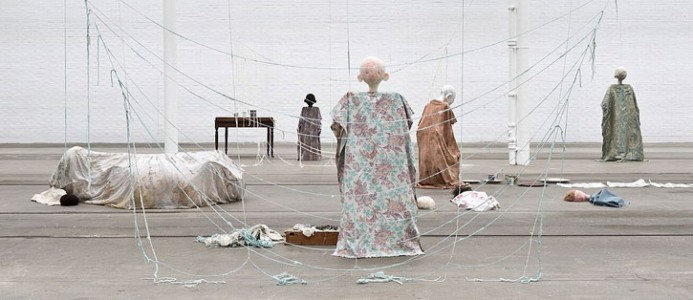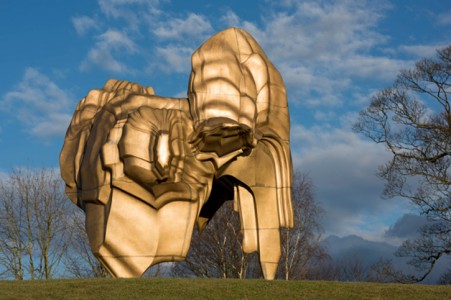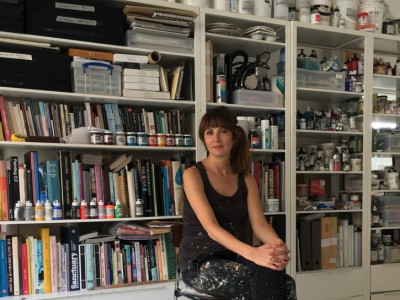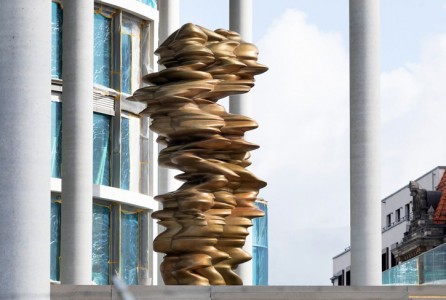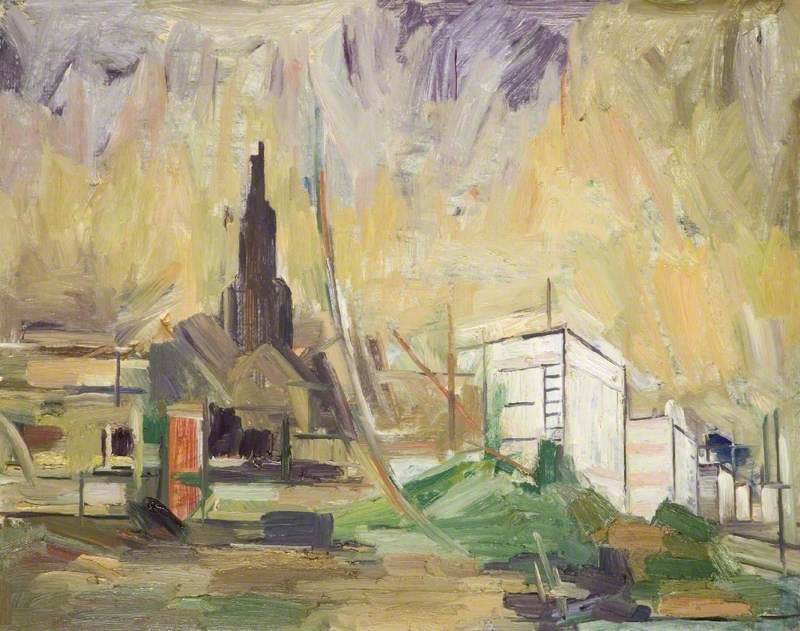Many of the statues and sculptures filling the streets, squares and parks of Britain act as unremarkable pieces of the urban jigsaw, camouflaged between grey streetlamps and wonky benches. Others, as recent events have shown, cause impassioned debates over whether they are the right ones to occupy public spaces and what message their existence communicates.
Marc Quinn's recently erected public sculpture A Surge of Power (Jen Reid) was created in response to this question. Installed in the early hours of 15th July 2020 in Bristol, without the permission of local authorities and against the wishes of mayor Marvin Rees, Quinn's resin and steel sculpture showed stylist Jen Reid standing with her fist raised in a black power salute. It was created using 3D printing techniques then cast in black resin.
View this post on Instagram
The new artwork commemorates a moment during the Black Lives Matter protest on Sunday 7th June 2020 when the real Reid stood atop the plinth where, until earlier that afternoon, a statue of Edward Colston (1636–1721), a merchant who made his fortune by the transatlantic slave trade, had stood for centuries. Colston's statue – first erected in 1895 – was toppled by protestors and deposited into the river Avon, from which it was subsequently dredged out with the aim of putting it on display in one of the city's museums.
The intended controversy of A Surge of Power (Jen Reid) lay in how it challenged historic notions of public statuary: replacing the image of a white male slave trader with that of a contemporary black female BLM protestor. But the public debate prompted by the arrival of the sculpture, which was removed by Bristol City Council early the following morning, was far more complex.
For some, the statue was a welcome replacement for Colston's image. In a statement on the artist's website, Reid wrote: 'This sculpture is about making a stand for my mother, for my daughter, for Black people like me. It's about Black children seeing it up there. It's something to feel proud of, to have a sense of belonging, because we actually do belong here and we're not going anywhere.'
In the same statement, Quinn describes creating the work in collaboration with Reid after seeing a photo of her standing on the empty plinth. The London-born artist was also inspired by a quote from Desmond Tutu: 'If you are neutral in situations of injustice, you have chosen the side of the oppressor.' If sold, all profit from the artwork is intended for two charities, Cargo Classroom and the Black Curriculum, which promote and expand the teaching of black history.
However others have regarded Quinn's statue in a negative light. Artist Thomas J. Price questioned the artwork in its context of being a creation by a white cis male artist. Writing in The Art Newspaper, Price labelled the work a 'votive statue to appropriation'. He suggests Quinn could have provided better allyship by giving '[t]he financial support and production facilities required for a young, local, Black artist to make the temporary replacement.'
Price's own public art commission, a new nine-foot-tall statue of a contemporary young black woman scrolling through her smartphone, was recently installed near Stratford, London on 5th August 2020.
View this post on Instagram
Named Reaching Out, the work depicts a black 'everywoman' whose recognisable ordinariness disrupts assumptions about what is celebrated in public art.
A Surge of Power (Jen Reid) is not the first time a public sculpture by Quinn has provoked controversy and varied responses. Between 2005 and 2007, Quinn's marble sculpture Alison Lapper Pregnant occupied the Fourth Plinth in Trafalgar Square.
The nude artwork echoed classical sculptures with missing limbs, like the ancient statue of Aphrodite known as the Venus de Milo currently housed in the Musée du Louvre, as a means of challenging historic and modern beauty standards, and views on disability.
Critic Rachel Cooke, writing in The Observer, said the sculpture '[t]hrough sheer verve and loveliness alone, seems to knock into a cocked hat the tired debate about what constitutes public art. This is public art, and let that be the end of it.' An inflatable version of the original subsequently featured prominently in the opening ceremony of the Paralympic Games in 2012.
But the politics surrounding the sculpture are far from simple. A 2017 article by Charles Josefson for Disability Arts Online summarises some of the complexities, including Lapper's own feelings and asks whether she – also an artist – should have been the one to receive the commission. Josefson states: 'The sculpture could be read as an accidental and unfortunate metaphor. The able-bodied receive acclaim, while the disabled continue to be marginalised.'
Like Alison Lapper Pregnant, Quinn's 2001 marble statue Kiss (currently at Graves Gallery, Sheffield) again drew inspiration from antique statues with missing limbs.
The intimate artwork – which also references Auguste Rodin's famous The Kiss – captures actor Mat Fraser and art therapist Catherine Long sharing an embrace. Viewed from different angles, the shape or absence of the models' upper limbs becomes apparent.
Another of Quinn's well-known sculptures, a work showing supermodel Kate Moss twisted into a yoga pose, likewise explores the links between ancient and contemporary beauty but without the more controversial connections to disability.
First cast in bronze and painted white in 2006 – and titled Sphinx – in 2008 the same work was cast entirely in gold, named Siren and displayed in the British Museum near the sculpture popularly known as the Lely Venus, a marble Roman copy of a Greek original statue of Aphrodite bathing.
As with his public artworks, Quinn's wider output has long sought to provoke and challenge the viewer. Categorised as one of the Young British Artists, Quinn's breakthrough career moment arrived with Self (1991), a self-portrait sculpture made using eight pints of his own blood and kept continually frozen at -18°C.
Exploring ageing, bodily disintegration and dependency, the first artwork is now part of an ongoing series Quinn adds to every five years.
The intersection between the natural and the technologically advanced is a key theme of Quinn's career. For example, Wilder Shores of Desire (2011), a greatly enlarged orchid which, like the statue of Reid, was made using 3D scanning technology, reflects on the human desire to control and triumph over nature.
Unlike Quinn's other work, it doesn't immediately seem provocative, although its link to the cultivation of orchids subtly nods to how even our basic understanding of 'nature' and 'natural' are contestable.
The ongoing public debate engendered by Quinn's sculptures demonstrates how public art remains a vigorously contested, politicised and emotive topic. The conversation surrounding the choice of public artworks is complex, nuanced and continually evolving. Even what initially appears to be a simple gesture of solidarity can carry with it far more complicated implications.
What an artwork depicts and where it stands is only one facet of this discussion. The identity of the artist who creates the work – either as a paid commission or on their own volition – is pertinent too. In 2020, the public art debate is about both artwork and artist.
Rosemary Waugh, art critic and journalist
Further reading
Aindrea Emelife, ''Hope flows through this statue': Marc Quinn on replacing Colston with Jen Reid, a Black Lives Matter protester', The Guardian, 15th July 2020
Charles Josefson, 'The Fourth Plinth: raising the issue of disability', Disability Arts Online, 7th August 2017
Thomas J. Price, 'The problem with Marc Quinn’s Black Lives Matter sculpture', The Art Newspaper, 16th July 2020



